 W
WA blockhouse in military science is a small fortification, usually consisting of one or more rooms with loopholes, allowing its defenders to fire in various directions. It usually refers to an isolated fort in the form of a single building, serving as a defensive strong point against any enemy that does not possess siege equipment or, in modern times, artillery, air force and cruise missiles. A fortification intended to resist these weapons is more likely to qualify as a fortress or a redoubt, or in modern times, be an underground bunker. However, a blockhouse may also refer to a room within a larger fortification, usually a battery or redoubt.
 W
WA body count is the total number of people killed in a particular event. In combat, a body count is often based on the number of confirmed kills, but occasionally only an estimate. Often used in reference to military combat, the term can also refer to any situation involving multiple killings, such as the actions of death squads or serial killers.
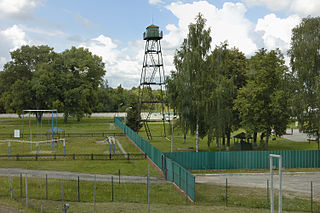 W
WA border outpost, border out post, border observation post or BOP is an outpost maintained by a sovereign state on its border, usually one of a series placed at regular intervals, to watch over and safeguard its border with a neighboring state with whom it may or may not have cordial relations. Such posts are manned by border guards and are at all times connected by radio communication with ongoing border patrols in their region and the force headquarters in the interior of the country for their day-to-day functioning, passing on intelligence and for requesting supplies and any needed reinforcements in emergencies.
 W
WThe Chief of Naval Research is the senior military officer in charge of scientific research in the United States Navy. The Chief of Naval Research has a rank of Rear Admiral, and is in charge of the Office of Naval Research.
 W
WCivil-military operations or CMO are activities of a military force to minimize civil interference on and maximize civil support for military operations. CMO is conducted in conjunction with combat operations during wartime and becomes a central part of a military campaign in counter-insurgencies. Some militaries have specialized units dedicated to conduct CMO, such as civil affairs forces or form task forces specifically for this purposes, such as a joint civil-military operations task force in the U.S. Military. Also, some militaries have staff sections dedicated to planning and coordinating CMO for their command. CMO is often called civil-military co-operation or CIMIC in NATO operations and civil-military co-ordination in UN operations.
 W
WCombat effectiveness is the capacity or performance of a military force to succeed in undertaking an operation, mission or objective. Determining optimal combat effectiveness is crucial in the armed forces, whether they are deployed on land, air or sea. Combat effectiveness is an aspect of military effectiveness and can be attributed to the strength of combat support including the quality and quantity of logistics, weapons and equipment as well as military tactics, the psychological states of soldiers, level of influence of leaders, skill and motivation that can arise from nationalism to survival are all capable of contributing to success on the battlefield.
 W
WCombat readiness is a condition of the armed forces and their constituent units and formations, warships, aircraft, weapon systems or other military technology and equipment to perform during combat military operations, or functions consistent with the purpose for which they are organized or designed, or the managing of resources and personnel training in preparation for combat.
 W
WCommand and control (C2) is a "set of organizational and technical attributes and processes ... [that] employs human, physical, and information resources to solve problems and accomplish missions" to achieve the goals of an organization or enterprise, according to a 2015 definition by military scientists Marius Vassiliou, David S. Alberts and Jonathan R. Agre, The term often refers to a military system.
 W
WMilitary education and training is a process which intends to establish and improve the capabilities of military personnel in their respective roles. Military training may be voluntary or compulsory duty. It begins with recruit training, proceeds to education and training specific to military roles, and sometimes includes additional training during a military career. Directing staff are the military personnel who comprise the instructional staff at a military training institution.
 W
WMilitary history is a humanities discipline within the scope of general historical recording of armed conflict in the history of humanity, and its impact on the societies, cultures and economies thereof, as well as the resulting changes to local and international relationships.
 W
WAn infrared flag is a type of combat identification used by soldiers. They consist of a national flag or other identifying icon with a Velcro backing for application to a soldier's uniform on the upper arm or chest.
 W
WKotta mara is a type of floating battery or fortified raft from Borneo. It is used by native Bornean in warfare, its usage rose prominently during the Banjarmasin war (1859-1906). Kotta mara is used in riverine warfare, as an armed vessel or simply a blockhouse or fortification to prevent enemy advance in the river.
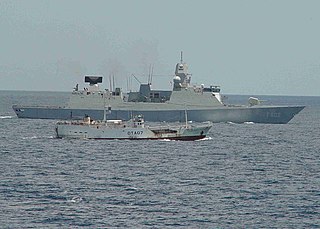 W
WMaritime security operations (MSO) are the actions of modern naval forces to "combat sea–based terrorism and other illegal activities, such as hijacking, piracy, and slavery, also known as human trafficking." Ships assigned to such operations may also assist seafaring vessels in distress. These activities are part of an overall category of activities which fall short of open warfare called military operations other than war (MOOTW). MSO also involve the marine environmental protection, creating a safer and clean environment.
 W
WA melee or pell-mell is disorganized hand-to-hand combat in battles fought at abnormally close range with little central control once it starts. In military aviation, a melee has been defined as "[a]n air battle in which several aircraft, both friend and foe, are confusingly intermingled".
 W
WMilitary branch is according to common standard the subdivision of the national armed forces of a sovereign nation or state.
 W
WMilitary logistics is the discipline of planning and carrying out the movement, supply, and maintenance of military forces. In its most comprehensive sense, it is those aspects or military operations that deal with:Design, development, acquisition, storage, distribution, maintenance, evacuation, and disposition of materiel. Transport of personnel. Acquisition or construction, maintenance, operation, and disposition of facilities. Acquisition or furnishing of services. Medical and health service support.
 W
WMilitary sociology is a subfield within sociology. It corresponds closely to C. Wright Mills's summons to connect the individual world to broader social structures. Military sociology aims toward the systematic study of the military as a social group rather than as a military organization. This highly specialized sub-discipline examines issues related to service personnel as a distinct group with coerced collective action based on shared interests linked to survival in vocation and combat, with purposes and values that are more defined and narrow than within civil society. Military sociology also concerns civil-military relations and interactions between other groups or governmental agencies.
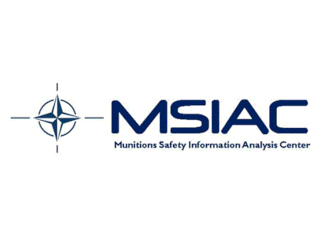 W
W W
WNight combat is combat that occurs during the hours of darkness. It is distinguished from daytime combat by lower visibility and its reversed relation to the Circadian cycle. Typically combat at night is favorable to the attacker, with offensive tactics being focused on exploiting the advantages to maximum effect. Defensive night tactics mainly focus on negating the advantages given by the night to the attacker.
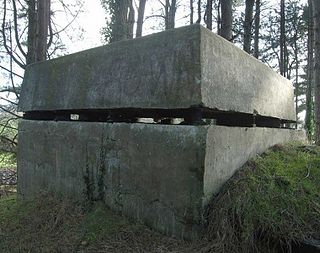 W
WAn observation post, temporary or fixed, is a position from which soldiers can watch enemy movements, to warn of approaching soldiers, or to direct artillery fire. In strict military terminology, an observation post is any preselected position from which observations are to be made - this may include very temporary installations such as a vehicle parked as a roadside checkpoint, or even an airborne aircraft.
 W
WIn the field of military theory, the operational level of war represents the level of command that connects the details of tactics with the goals of strategy.
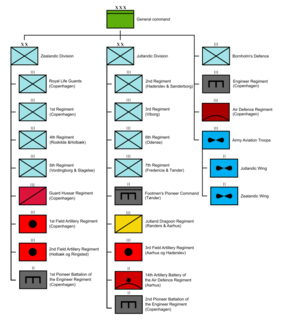 W
WMilitary organization or military organisation is the structuring of the armed forces of a state so as to offer such military capability as a national defense policy may require. In some countries paramilitary forces are included in a nation's armed forces, though not considered military. Armed forces that are not a part of military or paramilitary organizations, such as insurgent forces, often mimic military organizations, or use ad hoc structures, while formal military organization tends to use hierarchical forms.
 W
WA military outpost is detachment of troops stationed at a distance from the main force or formation, usually at a station in a remote or sparsely populated location, positioned to stand guard against unauthorized intrusions and surprise attacks; and the station occupied by such troops, usually a small military base or settlement in an outlying frontier, limit, political boundary or in another country. Outposts can also be called miniature military bases based on size and number of troops it houses.
 W
WPeace enforcement is the use of military force to compel peace in a conflict, generally against the will of combatants. To do this, it generally requires more military force than peacekeeping operations. The United Nations, through its Security Council per Chapter VII of its charter, has the ability to authorize force to enforce its resolutions and ceasefires already created.
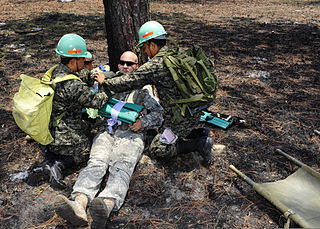 W
WThe United States Armed Forces, in Joint Publication 3-50 Personnel Recovery, defines personnel recovery as "the sum of military, diplomatic, and civil efforts to prepare for and execute the recovery and reintegration of isolated personnel."
 W
WA pillbox is a type of blockhouse, or concrete dug-in guard post, normally equipped with loopholes through which to fire weapons. It is in effect a trench firing step hardened to protect against small-arms fire and grenades and raised to improve the field of fire.
 W
WSix-Legged Soldiers: Using Insects as Weapons of War is a nonfiction scientific warfare book written by award-winning author and University of Wyoming professor, Jeffrey A. Lockwood. Published in 2008 by Oxford University Press, the book explores the history of bioterrorism, entomological warfare, biological warfare, and the prevention of agro-terrorism from the earliest times to modern threats. Lockwood, an entomologist, preceded this book with Ethical issues in biological control (1997) and Locust: The devastating rise and mysterious disappearance of the insect that shaped the American frontier (2004), among others.
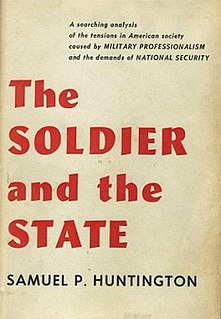 W
WThe Soldier and the State: The Theory and Politics of Civil-Military Relations is a 1957 book written by political scientist Samuel P. Huntington. In the book, Huntington advances the theory of objective civilian control, according to which the optimal means of asserting control over the armed forces is to professionalize them. This is in contrast to subjective control, which involves placing legal and institutional restrictions on the military's autonomy. Edward M. Coffman has written that "[a]nyone seriously interested in American military history has to come to terms with Samuel P. Huntington's The Soldier and the State."
 W
WAccording to military terminology, a two-front war occurs, when opposing forces encounter on two geographically separate fronts. The forces of two or more allied parties usually simultaneously engage an opponent in order to increase their chances of success. The opponent consequently encounters severe logistic difficulties as he is forced to divide and disperse his troops, defend an extended front line and is at least partly cut off from access to trade and exterior resources. However, by virtue of the central position he might possess the advantages of the interior lines.
 W
WThe Wujing Zongyao, sometimes rendered in English as the Complete Essentials for the Military Classics, is a Chinese military compendium written from around 1040 to 1044.